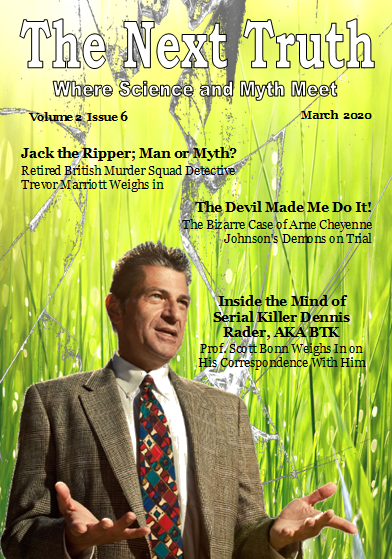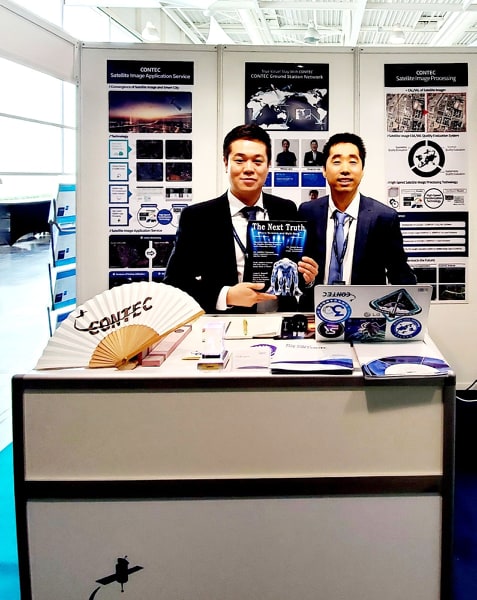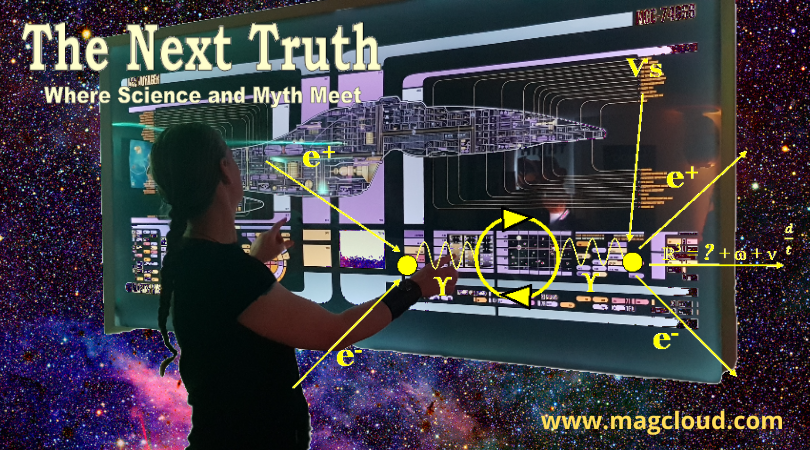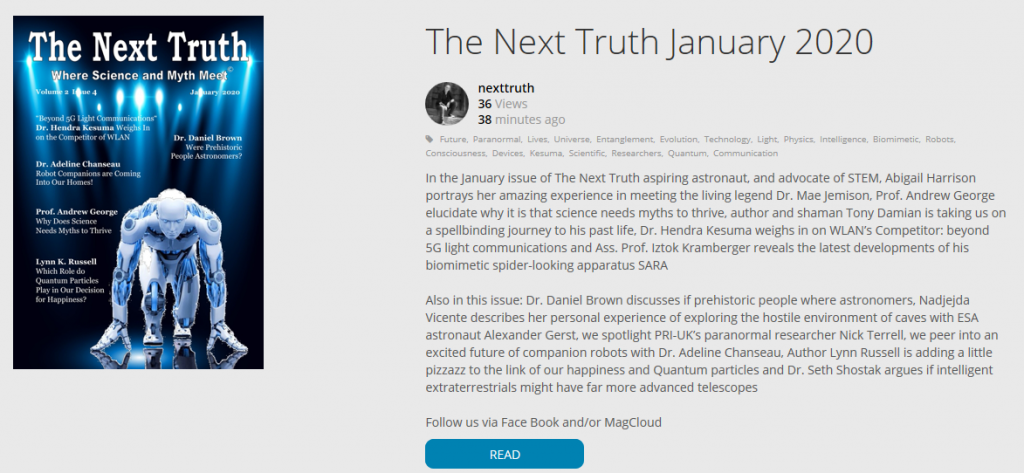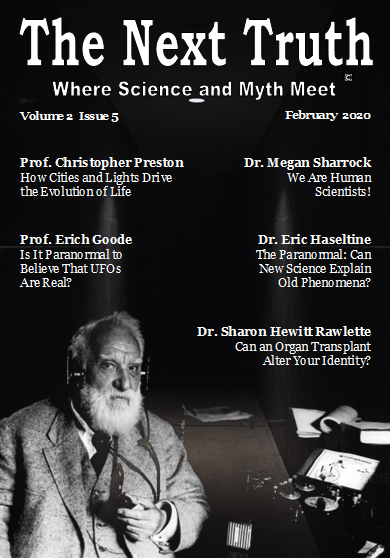Incredible Technology: Laser Space Communications Goes Beyond Our Imagination
By Maria Anna van Driel, www.nexttruth.com
Since the dawn of the space age, space-based technologies, namely communications satellites, enable global telecommunications systems by relaying signals with voice, video and data to and from one or many locations. But that is all set to change soon.
CONTEC’s President Dr. Sunghee Lee (45) and his 32-headed team of engineers, software developers and satellite image processors have set goal to master a tremendous challenge in constructing corresponding networks for their customers and cooperation companies.
They are working hard to develop laser-based space communications systems and the technology of launch and satellite application fields which are the key to ensure rapid and accurate transmission of information from Earth-based alternatives to, among others, spacecrafts orbiting around the Earth.
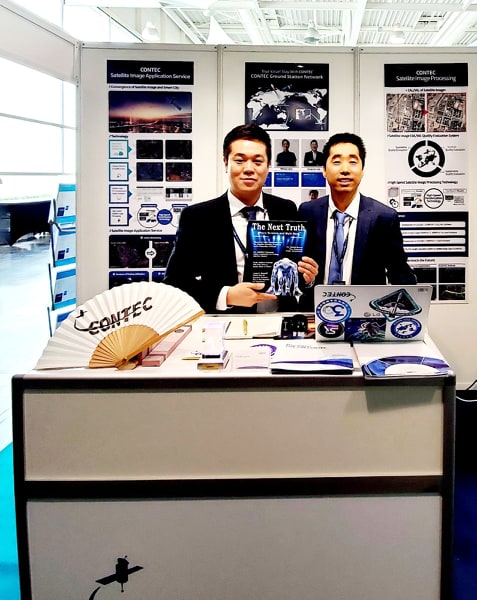
The Korean company CONTEC (Collaborative and Novel Technologies) was founded in Jan. 5, 2015 with only a dream and a deep passion for engineering and all that future space technologies has to offer. Driven by the idea of ‘space being infinitive’, the company has overcome the challenge in creating a company system in where competent individuals are matching its philosophy what has propelled a snowball effect in its growth.
So, whether it comes to simply phoning a friend or using your Skype app, some of our daily communication is, without a doubt, based on sophisticated networks, with data being transferred at the speed of light between different nodes. And while these Earth-based alternatives to space technologies are already possible, it seems that CONTEC has definitely the people and knowledge to go beyond sophisticated networks and build your future highway in communication…yesterday!
* * *
For more information on CONTEC, www.contec.kr
Or simply wait for the issue of April and the May/June issue of Young People Science in order to read the Q&A of Dr. Sunghee Lee 😊
Inspiring Technology That Came from Copying Nature
By Maria Anna van Driel, www.nexttruth.com

The natural world is full of incredible feats of engineering and well-adapted structures and materials honed to near perfection over geological time through natural selection. Given nature has the benefit of millions of years of trial resulting in tackling problems such as self-healing abilities, environmental exposure tolerance and resistance, hydrophobicity, self-assembly, and harnessing solar energy, it is logical that human construction can benefit in drawing from its influence.
The Pyramids, skyscrapers, airplanes, the electrical car, and Velcro tape…believe it, or not, some of the tools, vehicles, and products that you see, and use, on a daily basis have been inspired by animals and nature, innovations that have changed the world for the better and have made your life a little bit easier.
The modern concept of the robot began to be developed with the onset of the Industrial Revolution but despite the incredible ingenuity and engineering ability we have demonstrated during our existence, we are continually looking for new inspiration and ways to improve our designs so that we can manufacture our own versions of these biological marvels.
This approach to human innovation, via emulating nature, is called “biomimetic design” and has inspired many of our greatest creations. In short, biomimicry is the process of taking the innovations that exist in nature and applying them to technology. It seems that nature has a solution for almost everything.
“Looking at the engineering of nature, there is no creature born with wheels what makes the contemporary wheels exploration based robots lesser in its effectiveness when reconnoiter unknown environments. That’s why we selected an eight legged robotic device which is meant for exploration of extraterrestrial objects like asteroids,” Assistant Professor Iztok Kramberger, PhD, explained The Next Truth magazine during an interview at the Space Tech Expo 2019 in Bremen, Germany.
Electrical engineer Ass. Prof. Iztok Kramberger (47) is heading the Laboratory for Electronic and Information System at the Faculty of Electrical Engineering and Computer Science at the University of Maribor and is the mastermind of a spider-looking-like robot ‘SARA’ (Slovenian Arachnid Robot Adventurer) from both an artistic point of view and a hardware engineering point of view.
SARA (Slovenian Arachnid Robot Adventurer) is still in the phase of being a prototype but the unbeatable get-up-and-go mentality of the researchers from the Slovenian research institute Skylabs pushed them in working day and night on the complex electronics of this incredible spider robot, what is based on a biomimetic design, for the past 7 years. SARA’s skeleton construction is nature inspired and its algorithms for the optimization of the structures and, when completely stretched, has a diameter that can reach over 2 meters.
“The joint ratios of SARA have been evolved from Theraphosidae spiders, where the central body is more or less an oval form with a larger diameter of 40 centimetre. Each leg, when stretched fully, measures up to 90 centimetre. Nevertheless, it is not all about its dimensions as it can be scaled to an applicable size using more or less same intelligence,” Ass. Prof. Kramberger said.
Still, even the scientific research conducted in the field of electronics and communication technologies at Skylabs, have been pushing the boundaries in the art and science of designing and building an amazing biomimetic apparatus since 2012, some technological and funding setbacks what, to a small degree, prevented SARA’s progress, where for Ass. Prof. Kramberger and his team no unusual experience. These setbacks where not forming a solid brick wall for the researches at Skylabs, it encouraged them to focus on evolving and improving the project even more.
“There were and are still several problems to be solved before SARA will be able to walk nature wise and completely autonomous. One of the challenges were to construct an appropriate skeleton and to solve the control by a fully distributed data handling system, while consuming lots of energy remains an issue,” Ass. Prof. Kramberger explains later in an email.
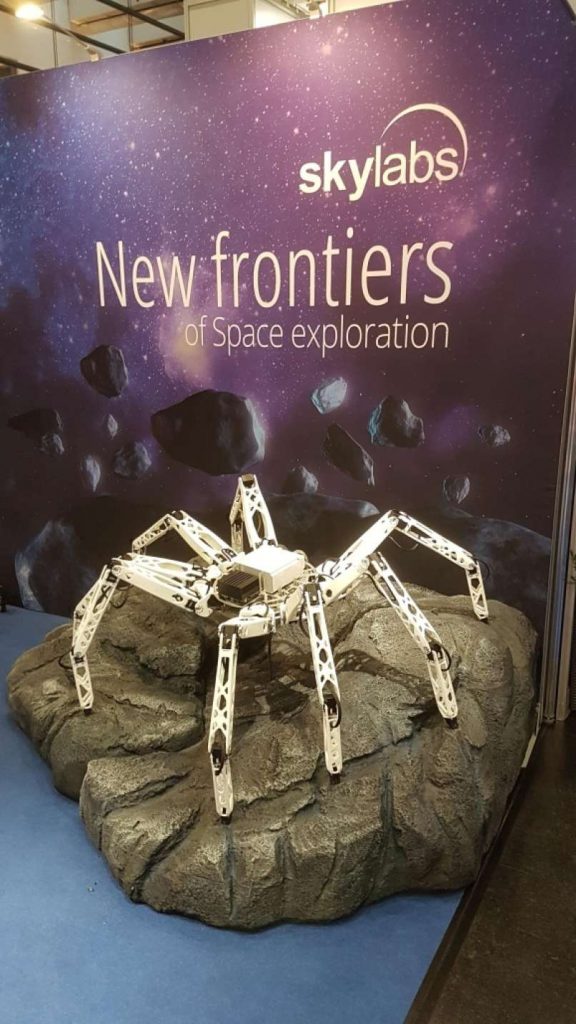
Photo credits: Skylabs
To address the second challenge of congenital natural movements Skylabs research team focused on distributed control algorithms using a fully distributed data handling system being based on SkyLabs’ PicoSkyFT technology.
“PicoSkyFT, Ass. Prof. Kramberger continues, is an ultra-small and high performance Fault Tolerant microcontroller processing core what provides the capability to integrate the control intelligence into all joints and interaction sensors of the platform giving it the ability of fully synchronous control operation. Merge it with the central Artificial Intelligence or the main brain of SARA, including additional imaging sensors for environmental awareness, we get a completely autonomous legged walker.”
The third biggest challenge, so explained Prof Kramberger, is the power consumption. While comparing it to general rovers the power consumption is much bigger.
On the strength of the torrent of ideas and experiments Skylabs researchers have run over the past 7 years with robots whose appearance has nothing in common with those as though of as if they came from the dollar store and flap their little arms like beetles stuck on their backs, the spider-looking-like robot SARA can move through rough terrain effortless. Also, its communication skills is pointing toward a connection with any known wireless technology ranging from personal area networks to wide area networks and is tested in an, by Skylabs created, environment, similar to that of Mars, for a future swarm based exploration of extra-terrestrial bodies.
“The selection of the wireless communication technology depends on the target application,” As. Prof. Kramberger continues to write in his mail. “When discussing swarm based exploration missions we are combining the developments SkyLabs’ inter-satellite communication modules providing robust and Fault Tolerant communication between the devices and an orbital gateway like the Moon Gateway.”
Currently the research team from the Slovenian institute Skylabs is developing SARA’s head which will be full of cameras in order for the biomimetic apparatus to scan its environment in a similar manner as natural evolved spiders can. When asking Ass. Prof. Kramberger if he has calculated the possibility for his eight legged spider robot to undergo an evolution in behavior through machine learning and therefore gains the capability to act territorial as real animals do in nature, he assured us that a though as such lies more in the realm of science fiction.
“We are targeting SARA’s first unmanned mission to an extra-terrestrial body like the moon providing more deep autonomous swarm based exploration by putting several interlinked devices to Moon acting as robot based population but AI can only be as smart as people are. They can be faster but will posses not more intelligence,” Ass. Prof. Kramberger responded.
It seems that these incredible robots of the future are going to be the best possible user interface for, among others, AGI systems to interact with humans and interact with the world. But AI will not be restricted to biomimetic designed robots. AI will “live” in all sorts of embedded devices and the Internet of Things. It will go into space and down to the bottom of the ocean before we humans will physically set foot on the surface of a new moon or planet. We need to have some data about its environment first what is a logical line of thought. A pre-exploration with low-cost biomemitec designed robots, which do not require water and converts sunlight into energy, is by far the safest way in assisting research institutes like ESA, NASA, Roscosmos, JAXA and CSA, for example, and guiding future astronauts during their deep space missions.
Indeed, it’s been an uphill struggle for decades but robots and artificial intelligence (AI), scary as it sounds, has become part of the furniture in engineering and our daily activities and researchers are rapidly learning how to control these biomimetic systems so that they function in a manner similar to swarms of bees or colonies of ants while exploring any new terrain which is out there in the cosmic freezer but yet unknown to us.
For more information on Skylabs and SARA: www.skylabs.si

[Top]
January 2020 Issue – Out Now!

First of all, Happy New Year everyone and a fantastic 2020! Secondly…the first issue of this year is available online. Thank you for contributing and I hope you enjoy this month’s issue.
Never Miss An Issue Of The Next Truth Magazine. https://www.magcloud.com/browse/magazine/1512517
In the January issue of The Next Truth aspiring astronaut, and advocate of STEM, Abigail Harrison portrays her amazing experience in meeting the living legend Dr. Mae Jemison, Prof. Andrew George elucidate why it is that science needs myths to thrive, author and shaman Tony Damian is taking us on a spellbinding journey to his past life, Dr. Hendra Kesuma weighs in on WLAN’s Competitor: beyond 5G light communicationsand Ass. Prof. Iztok Kramberger reveals the latest developments of his biomimetic spider-looking apparatus SARA
Also in this issue: Dr. Daniel Brown discusses if prehistoric people where astronomers, Nadjejda Vicente describes her personal experience of exploring the hostile environment of caves with ESA astronaut Alexander Gerst, we spotlight PRI-UK’s paranormal researcher Nick Terrell, we peer into an excited future of companion robots with Dr. Adeline Chanseau, Author Lynn Russell is adding a little pizzazz to the link of our happiness and Quantum particles and Dr. Seth Shostak argues if intelligent extraterrestrials might have far more advanced telescopes.
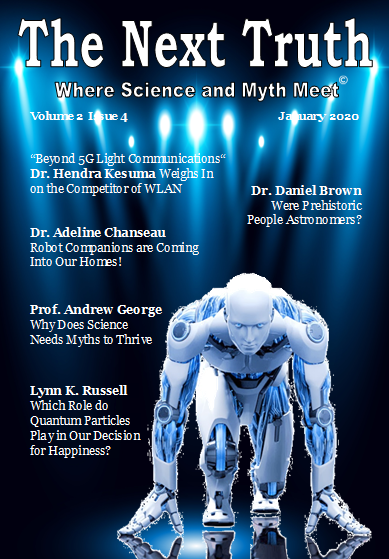
The impact you have on other people’s lives
You know what fires me up and keeps me going? People who dare to look into the world and say; “What can I contribute? What can I give? I guarantee you, you will hear a voice that is saying; ‘It is just no uses. It is out of mine control’. There will be a voice telling you that: ‘You will be wasting your time, your energy and your efforts’. I advice you, do not listen to it. Rather listen to this whispering voice that says: ‘I CAN do something…and I am going to do it.”
I strongly believe that each one of us was born with a special skill. That each one of us was born to contribute something to life and that if we do not do share our skills…this knowledge will be lost forever. Be the one that want to contribute…to youth, the homeless or your neighbor.
If you get up in the morning and decide that, “I’m the open for the universe”, life can work through you as a channel and as an instrument for change. How will you serve the world? What do they need that your talent can provide? That is all you have to figure out. And I can tell you from experience, the effect you have on others is the most valuable currency there is.
You are ready and able to do beautiful things in this world!
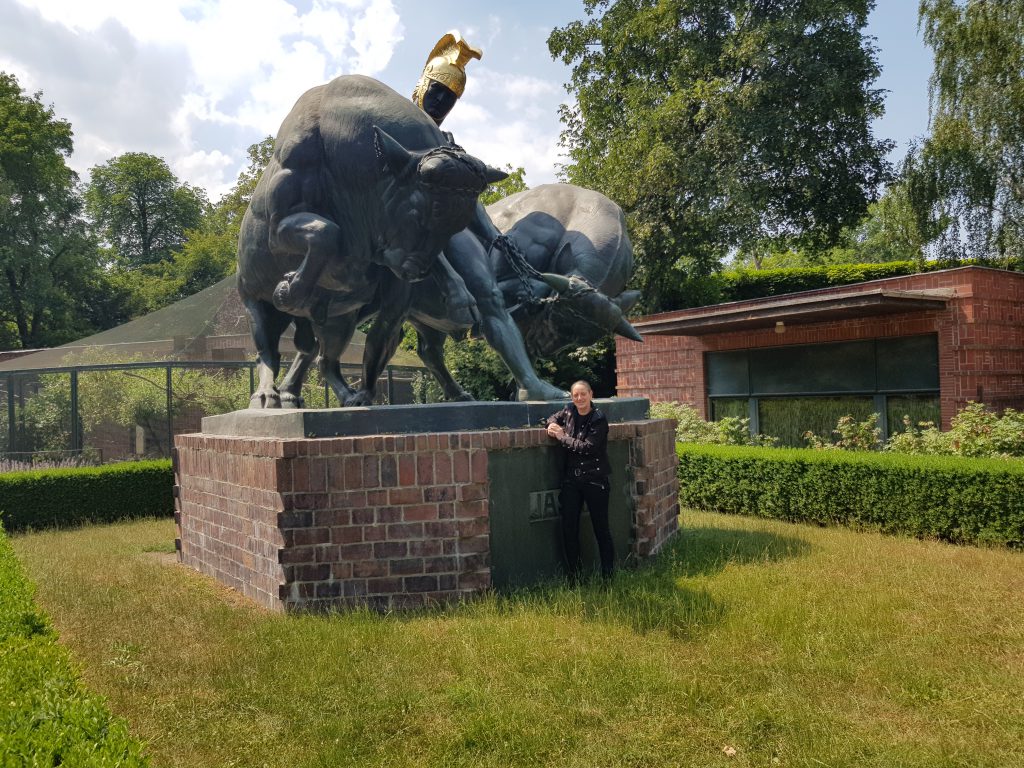
After you walk through those doors today, you will only have two choices: love or fear. I would say, do not ever let fear turn you against your playful heart. Begin to see yourself as an opening for the universe, to move through, to work through and to make a difference in life.
It is easy to be positive when everything is working out but it is much harder…much much harder when you are facing challenges in your life. But that’s when we need it the most… to believe in what has yet to come.
Everything worth the prize is worth the fight. Everything worth the prize will require a real fight to achieve that prize. If you want the prize you cannot quit halftime, you cannot quit midseason. You must play the whole game preseason…through the cold, the darkness, through the challenges and the opponents. You will be knocked down of course but you must get up keep fighting no matter what your job throws at you. Dig deep and discover your true strength!
See yourself being used by life, to improve quality of life, to expand and to grow.
If you wait until you can do everything for everybody, instead of something for somebody, you will end up not doing nothing for nobody.
Be the change…the inspiration…you want to see!
[Top]The December issue… Out Now!
The December issue of The Next Truth is available online! 😊https://www.magcloud.com/browse/magazine/1512517
Thank you all for the efforts made and contributing your amazing work for the December issue. I hope you enjoy this month’s issue.
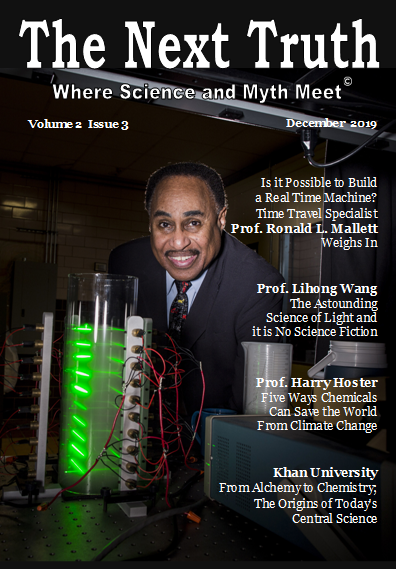
In the December issue of The Next Truth time travel specialist Prof. Ronald L. Mallett weighs in on the stunning science and technologies of time travel, Prof. Lihong Wang elucidate how the world’s fastest camera can capture the speed of light, Dr. Andreea Font explains her eye-opening research what has the prospect of scaffolding a hidden cosmic web MPI for Radio Astronomy let us peer at the birth of the Universe and the author Tony Damian reveals his personal experience about a forbidden romance during medieval times.
Also in this issue: Prof. Harry Hoster is discussing the challenging opportunities of how chemicals can reduce climate change, we spotlight PRI-UK’s paranormal researcher Ellie Maybanks, dimensional researchers Nick and Andy are applying AI to the foggy realms of the unknown, Michelle Feder is describing the mind-blowing history of Alchemy, DESY aims its UV-satellite to Black Holes and DARPA gives us a deeper insight into the evolution of computers.
[Top]The Future was Yesterday
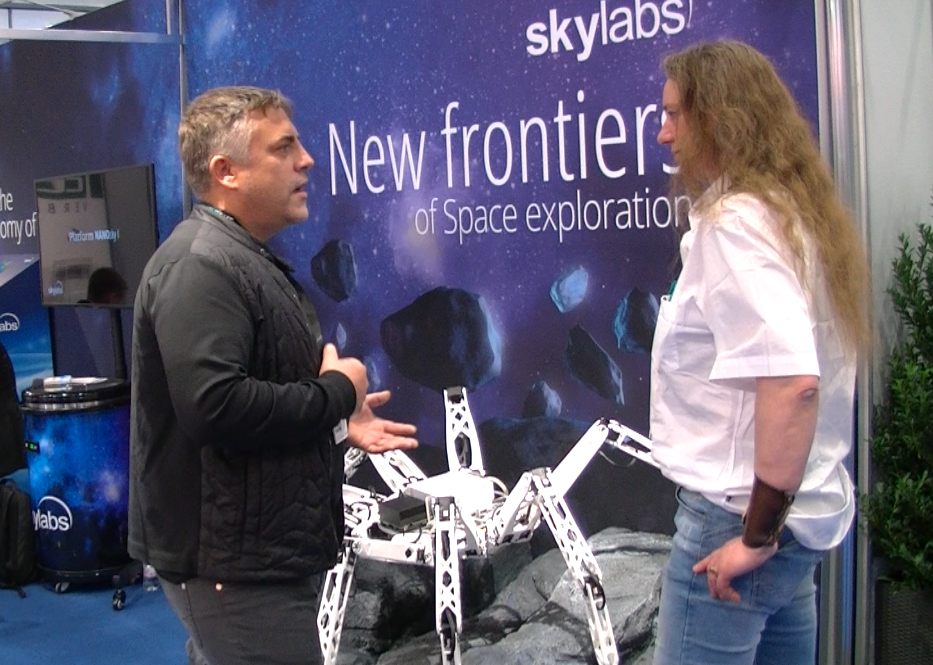
By Maria Anna van Driel
Since the dawn of civilization humanity pondered over the question of where we, as a species, will go and what will happen when we get there. But it was not until the 19th century that we realized that we had the technology to do great things and to expand beyond the limits of our own imagination.
The history of science fiction (SF) is vast and complicated. Many old texts depict advanced technologies and scenarios where man traverses beyond the limits of the world, and dives into space and the cosmos beyond. The mathematician and engineer Heron of Alexandria invented the first known automatic door in the first century AD in the region of Roman Egypt. The Greek writer Lucian of Samosata wrote “True History”, which depicts a man who travels beyond the heavens to witness a battle between the People of the Moon and the People of the Sun. The story “The Ebony Horse” depicts a man-made horse that, with the turn of a key, can carry a cart beyond the atmosphere into the outer reaches of space. And the story, “The City of Brass,” depicts an ancient city, comprised of abandoned technology, filled with living puppets without puppeteers and other constructed men.
Even in early SF space was described as being full of aether or air, which, to a modern perspective, comes across as a little bizarre, this appealing genre continued to evolve. One of the most notable works that shaped the modern SF genre was Mary Wollstonecraft Shelley’s 1818 novel “The Prometheus” aka “Frankenstein”. Associated with horror literature, many historians do believe that it is the first real SF work in where Victor Frankenstein’s science experiments created ‘something’ that contains life.
In the decades following many became convinced that they had transcended to a new level of human understanding, and, for the first time, were capable of addressing scientific issues. Galileo Galilei and Nicolaus Copernicus were publishing their theories about the nature of the cosmos, and Leonardo Da Vinci had already designed a clockwork designs of the helicopter.
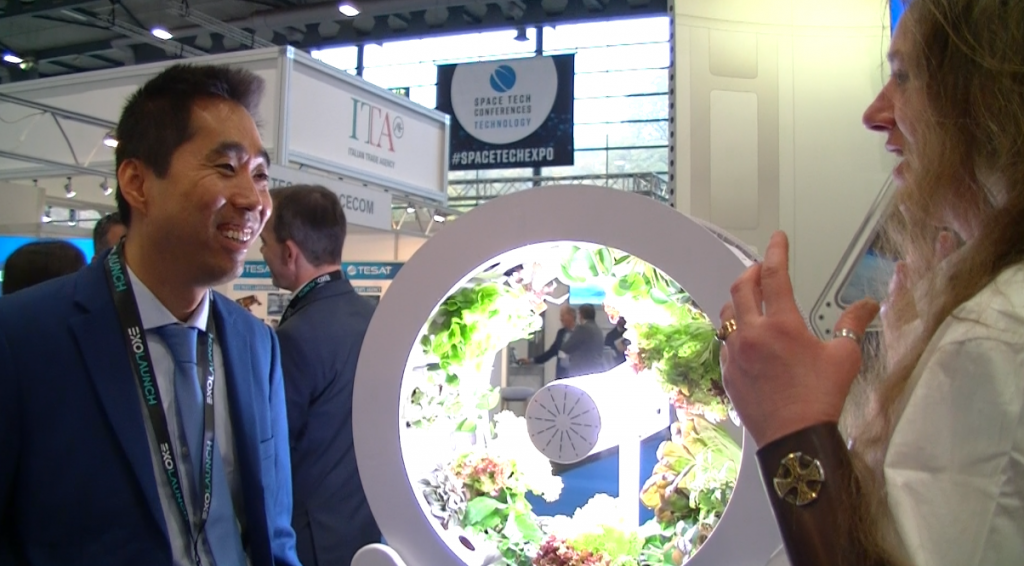
Even SF had become in vogue this genre is still inundated with dark dystopias nowadays. We just cannot seem to look away from ideas about how society is going to go down. What we don’t often see are ideas about humanity prospering. And so, we immediately think of the Jules Verne, H. G. Wells, and Edgar Allan Poe type of stories when hearing or reading the word ‘Science Fiction’.
This ‘speculative’ fiction, also known as ‘soft’ SF, deals with imaginative and includes a wide range of futuristic concepts and themes such as advanced science and technology, space exploration, time travel, parallel universes, and extraterrestrial life. But these ‘new’ technologies pictured for us in SF novels and movies are not at all impossible of realization tomorrow.
There exists a common misconception that all SF is fantastical and always has to takes place in a remote universe where civilizations have overcome the energy barrier what makes space-ships travel faster than then speed of light. While many beautiful entries in the SF universe do bend the rules about what is or is not possible in our physical universe, much SF is actually based in science. This is known as ‘hard’ SF.
Some of the tropes in hard SF are truly fascinating like plausible interstellar travel, advancements in technology, artificial intelligence, communication with light, 3D printers, smart-phones, among others.
SF has evolved from the ancient era up to the present and, believe it or not, past ideas that were mere SF 200 years ago are a reality today. While we may not be teleporting people from starships to a planet’s surface anytime soon, many of the devices from science fiction movies and series are slowly becoming a reality. Scientists are getting closer and closer in developing other tools essential for, for instance, future space travel endeavours.
So, if you think technologies from the series Star Trek or Star Wars seem far-fetched, think again.
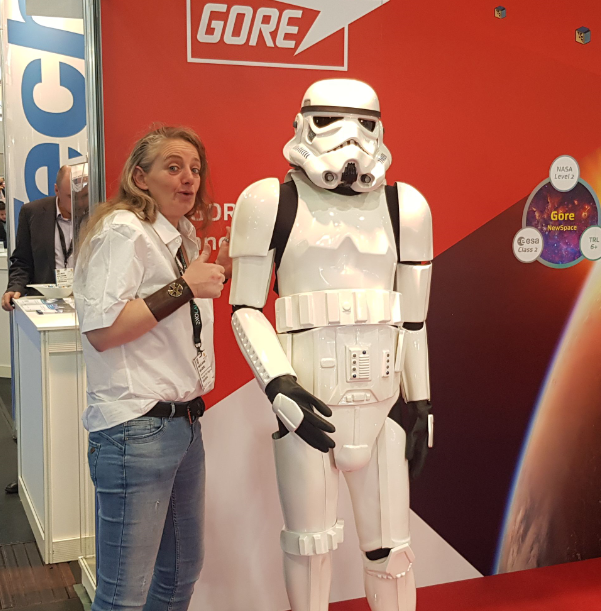
The Astounding Science of Light and It is No Science Fiction
By Maria Anna van Driel
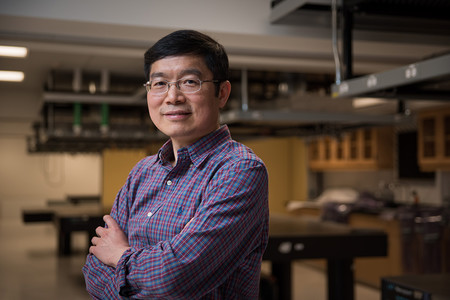
It goes through walls with the speed of 299792458 metres per second (approximately 300000 km/s (186000 mi/s)), but slows to a standstill in ultra-cold gases. It carries electronic information for radios and TVs, but destroys genetic information in cells. It bends around buildings and squeezes through pinholes, but ricochets off tiny electrons. It is “light” and it is made of photons. Radio waves are made of photons. X-rays are, you got it… made of photons.
From low energy radio waves to high energy gamma rays, light zips around us, bounces off us, and sometimes goes through us. Because it is so many things, defining light is a bit of a philosophical quandary. And although scientists have calculated the amount of visible light released into the universe by stars since the universe’s origin equals 4 x 10^84 photons, or, if you prefer, 4,000,000,000,000,000,000,000,000,000,000,000,000,000,000,000,000,000,000,000,000,000,000,000,000,000,000,000,000 photons, we know it primarily as the opposite of darkness. Most of the light is not visible to our eyes. It is like you are viewing a single 60-watt light bulb in complete darkness from about 2.5 miles away. But that does not mean it cannot be captured.
What is light?
Light could be a number of different things, depending on the circumstances. It could be the glow from a light bulb in your bedroom or the warm shining rays that beat down from the sun. Light can be natural (the sun) or manmade (candles or light bulbs), but no matter how it is created, we utilize light every single day. But the light scientists are talking about is part of the electromagnetic spectrum, which ranges from radio waves to gamma rays. Electromagnetic radiation (EMR) waves, as their names suggest are fluctuations of electric and magnetic fields, which can transport energy from one location to another. EMR can also be described in terms of a stream of photons which are massless particles each travelling with wavelike properties at the speed of light. In a nutshell, light is a form of energy and it travels in waves, similar to waves of water in the ocean. Except with light, the things doing the waving are electric and magnetic fields. Literally, light is a self-contained little bundle of these two fields, intertwined. That is why we call light electromagnetic radiation.
If you are floating in the ocean, you’ll move up as a wave passes you, then back down, then back up again when the next wave rolls by. The distance between these crests in the wave is called the wavelength. Since light is a wave, it has a wavelength as well, and this may be its single most important feature. That is because the energy of light is tied to its wavelength.
To put it simply, light is a type of radiant energy that we are able to visually perceive with our eyes. Over millions of years, our eyes have evolved to detect the kind of light the Sun emits most strongly. Well, that makes sense; that makes it easier for us to see! We call this kind of light “visible light”. And that is just the narrowest sampling of all the different wavelengths light can have.
But what does the speed of light actually look like?
Even it might sound like a ridiculous question, optical researchers at the California Institute of Technology recently built the world’s fastest camera which makes it possible to actually see light speed. Scientists at CALTECH now can capture X Y images but at 100 billion frames per second, that is 1 billion is 10 to the 9th. In fact they have upgraded their system to 10 trillion frames per second and with this type of rate, even a 100 billion frames per second; they can see a light pulse propagating in space and capture the scene literally at the speed of light.

The “Sonic Boom” for light
Normally sonic booms are created when an object moves faster than the speed of sound. But you should not be able to create a ‘sonic boom’ for light when nothing can travel faster than light. Unless you are a bit more specific.
“What we did was, we created a tunnel where the speed of light in the tunnel is greater than the speed of light in a medium and so we propagate a very short light pulse in that medium, Bren Professor of Medical Engineering and Electrical Engineering at the California Institute of Technology Lihong Wang explains in his You Tube video interview. “We spray some scatters within the tunnel, he says, so we generate secondary light sources and a light source will be propagated in the background medium so the light source will propagate at a greater speed and that create a superluminal light source.”
Now, light moves slower through the plate material than it does in the tunnel. So, as light scatters into the plates, it cannot keep up with the light in the dry ice fog. When this happens a cone-shaped wave-front of light forms behind the laser pulse just like a sonic boom shockwave created by a supersonic aircraft.
“If I speak and I stand still I emit approximately a spherical wave going out, Professor Lihong Wang explains. “But if I walk and talk it will be distorted. If I walk at a speed of sound or passing the speed of sound, I will create a cone structure that is called a “Sonic Mach cone” that is the sonic version of Mach cone and I was wondering if there’s this photonic version that we can image.”
While this was not the first time a photonic boom had been created – it was the first time one had been captured in real time. That is thanks to a new superfast camera that can capture images at 100 billion frames per second. They call it the “streak camera” whereby the technique employs a complex contraption that uses cameras and mirrors to build these slow motion movies tracking the lights movement across a scene. This streak camera is so fast that researchers ultimately hope to use it to image more than just laser pulses.
“One of the biomedical applications we are after is to image action potential propagation in a neural network, Professor Wang says in his video interview. “ So essentially we want to see the live traffic within the brain and find out how the brain is wired and that would elucidate the mysteries of the brain.”
To watch Professor Lihong Wang’s full video interview, https://youtu.be/BRLiXvX7uRw
[Top]Inspire to Make a Difference

By Maria Anna van Driel
As both the owner and founder of The Next Truth magazine and as a…um, well a passionate science freak, I want to make an important call to you; Inspire our children to explore the wonderland of science!
When we think about making a difference we seem to fall for the myth that what we need to start out doing something what has to be enormous to have any effect at all. I have learned that it does not have to be the case as well as the step some of us do not see when trying to make a difference in this world is the action part.
Sure, we have all had that spark of inspiration where we have wanted to do something that will outlast our physical form. But we get stuck in overthinking, opinions from our network and keep dreaming about a perfect idea. Disconnect from the outcome and aim your energy into achieving something small first. And even the small actions will feel insignificant at the time; the results will come as you hone your craft and find your audience.
Then we share the idea with friends, family and work colleagues and get told to quit while we are ahead. I am telling you not to quit! Anyone can make a difference in the world. Start by believing in something bigger than yourself and inspire one person at the time.
The field in where I like to inspire people is the broad knowledge of the myriad corners contemporary and historical science has to offer and believe me…that is not an easy task. But over the years I have learned that people are extremely hungry for absorbing the knowledge and the mind boggling complexity within the research universities and institutes are conducting especially young people. But to be straightforward with you, I was missing something while visiting some of these institutes… the playful excitement in guided tours and exploding talks for the young people… our next generation of male and female scientists.

As we all know, young people possess a fiery curiosity some adults work with in a more reduced manner. This enthusiastic curiosity should be, in my opinion, kept charged by letting these young people explore the myriad opportunities the wonderland of science has to offer them. Because, who does not like the laser swords from Star Wars, the mysteries of Time Travel or space ships exploring the most remote corners of universe while using advanced plasma technologies. Well…I do, I do!
So, after working in the midst of brilliant minds from all over the world and having the opportunity to speak with the them in person as well as via email and social media, what I find highly interesting, I have learned that these open-minded scientists have really awesome theories of which I am positive of that the next generation of young scientists are eager to learn about. As well as I am convinced that these young people are eager to meet these open minded scientists in person who can let this enthusiasm explode with them while they are learning all about the incredible research conducted.
Come on, admit it, wouldn’t you like to meet for instance Astronomer Dr. Seth Shostak from SETI, CERN’s Higgs convener Prof. Bill Murray, Germany’s time researcher Dr. Marc Wittmann or Prof. Ronald Mallett and let your enthusiasm explode while listening and learning all about the jaw-dropping theories? Again…I do, I do!
I am of the opinion that it will be more than fantastic that you, as a parent and a teacher, keep alive the fiery curiosity of these young people, They need your support in being inspired what will unlock these brilliant young minds of the next generation of engineers, astronomers, psychologists, chemists, physicists, among others. Give them the change to stand up and free their enthusiasm. Let them explore the wonderland of science!
[Top]
